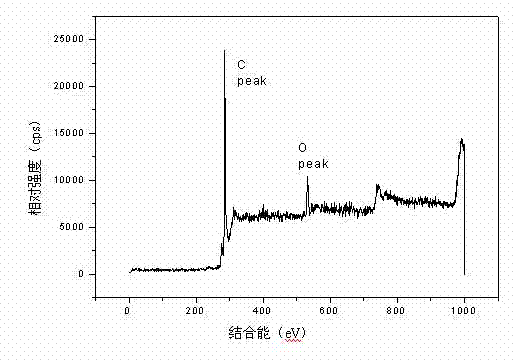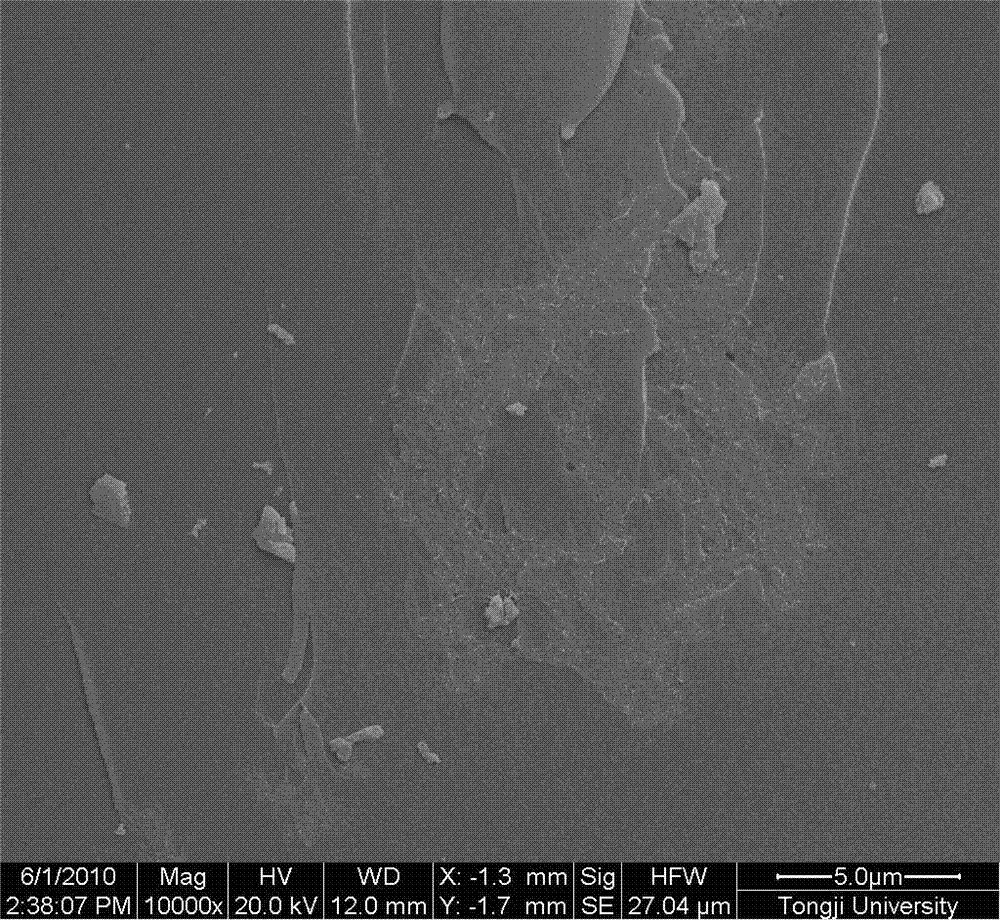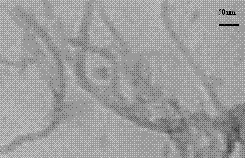Method for preparing graphite and functional carbon fiber modified epoxy resin composite material
A technology of epoxy resin and functionalized carbon, which is applied in the field of nanomaterials, can solve the problems of low interface bonding strength, low surface energy, low reactivity, etc., achieve good interlayer shear strength, improve interface strength, and preparation method simple and easy effects
- Summary
- Abstract
- Description
- Claims
- Application Information
AI Technical Summary
Problems solved by technology
Method used
Image
Examples
Embodiment l
[0032] Example 1: Multi-walled carbon nanotubes (OD<8nm) and carbon fibers prepared by the arc discharge method are used as initial raw materials. After purification, acidification and amination, the multi-walled carbon nanotubes react with acidified carbon fibers. After a certain period of reaction , and then add decyl diamine to the system to fully aminate the carboxyl groups that have not completely reacted with the aminated carbon nanotubes on the surface of the carbon fiber, and the surface of the obtained carbon fiber is grafted with carbon nanotubes and decyl diamine, and then the carbon fiber and Bisphenol A epoxy resin (E-44) is pre-polymerized to obtain a reinforced body grafted with bisphenol A epoxy resin on the surface of the functionalized carbon fiber. The dry graphite is uniformly mixed with the bisphenol A epoxy resin to obtain a graphite-modified bisphenol A epoxy resin matrix. Finally, the surface of the functionalized carbon fiber obtained above is grafted ...
Embodiment 2
[0042] Example 2: Single-walled carbon nanotubes (OD<8nm) prepared by chemical vapor deposition are used as the initial raw material. After purification, acidification and amination, the single-walled carbon nanotubes react with acidified carbon fibers. After a certain period of time, Then add hexamethylenediamine to the system to fully aminate the carboxyl groups that have not completely reacted with the aminated carbon nanotubes on the surface of the carbon fiber, and the surface of the obtained carbon fiber is grafted with carbon nanotubes and hexamethylenediamine, and then the carbon fiber and bisphenol A-type epoxy resin (E-51) is pre-polymerized to obtain a reinforced body grafted with bisphenol A-type epoxy resin on the surface of functionalized carbon fibers. The dry graphite is uniformly mixed with the bisphenol A epoxy resin to obtain a graphite-modified bisphenol A epoxy resin matrix. Finally, the surface of the functionalized carbon fiber obtained above is grafted ...
Embodiment 3
[0052]Example 3: Single-walled carbon nanotubes (OD<8nm) prepared by laser evaporation method were used as the initial raw material. After purification, acidification and amination, the single-walled carbon nanotubes reacted with acidified carbon fibers. Add ethylenediamine to the system to fully aminate the carboxyl groups that have not completely reacted with the aminated carbon nanotubes on the surface of the carbon fiber, and the surface of the obtained carbon fiber is grafted with carbon nanotubes and ethylenediamine. A-type epoxy resin (E-54) is pre-polymerized to obtain a reinforced body grafted with bisphenol A-type epoxy resin (E-54) on the surface of the functionalized carbon fiber. The dried graphite is uniformly mixed with the bisphenol A epoxy resin (E-54) to obtain a graphite-modified bisphenol A epoxy resin (E-54) matrix. Finally, the surface of the functionalized carbon fiber obtained above is grafted with a reinforcement of bisphenol A epoxy resin (E-54) and a...
PUM
 Login to View More
Login to View More Abstract
Description
Claims
Application Information
 Login to View More
Login to View More - R&D
- Intellectual Property
- Life Sciences
- Materials
- Tech Scout
- Unparalleled Data Quality
- Higher Quality Content
- 60% Fewer Hallucinations
Browse by: Latest US Patents, China's latest patents, Technical Efficacy Thesaurus, Application Domain, Technology Topic, Popular Technical Reports.
© 2025 PatSnap. All rights reserved.Legal|Privacy policy|Modern Slavery Act Transparency Statement|Sitemap|About US| Contact US: help@patsnap.com



